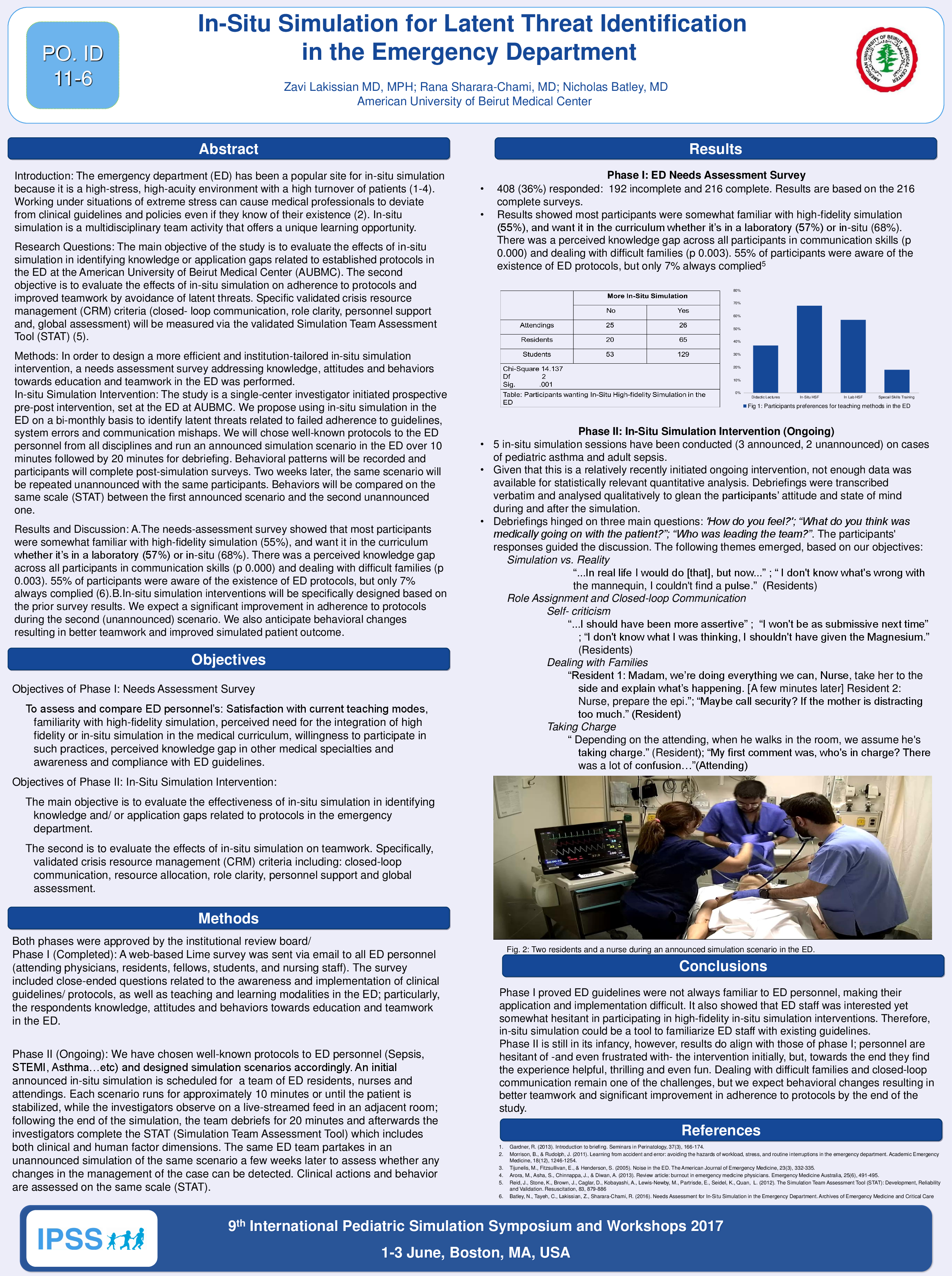Abstract
Introduction: The emergency department (ED) has been a popular site for in-situ simulation because it is a high-stress, high-acuity environment with a high turnover of patients (1-4). Working under situations of extreme stress can cause medical professionals to deviate from clinical guidelines and policies even if they know of their existence (2). In-situ simulation is a multidisciplinary team activity that offers a unique learning opportunity.
Research Questions: The main objective of the study is to evaluate the effects of in-situ simulation in identifying knowledge or application gaps related to established protocols in the ED at the American University of Beirut Medical Center (AUBMC). The second objective is to evaluate the effects of in-situ simulation on adherence to protocols and improved teamwork by avoidance of latent threats. Specific validated crisis resource management (CRM) criteria (closed- loop communication, role clarity, personnel support and, global assessment) will be measured via the validated Simulation Team Assessment Tool (STAT) (5).
Methods: In order to design a more efficient and institution-tailored in-situ simulation intervention, a needs assessment survey addressing knowledge, attitudes and behaviors towards education and teamwork in the ED was performed.
In-situ Simulation Intervention: The study is a single-center investigator initiated prospective pre-post intervention, set at the ED at AUBMC. We propose using in-situ simulation in the ED on a bi-monthly basis to identify latent threats related to failed adherence to guidelines, system errors and communication mishaps. We will chose well-known protocols to the ED personnel from all disciplines and run an announced simulation scenario in the ED over 10 minutes followed by 20 minutes for debriefing. Behavioral patterns will be recorded and participants will complete post-simulation surveys. Two weeks later, the same scenario will be repeated unannounced with the same participants. Behaviors will be compared on the same scale (STAT) between the first announced scenario and the second unannounced one.
Results and Discussion: A.The needs-assessment survey showed that most participants were somewhat familiar with high-fidelity simulation (55%), and want it in the curriculum whether it’s in a laboratory (57%) or in-situ (68%). There was a perceived knowledge gap across all participants in communication skills (p 0.000) and dealing with difficult families (p 0.003). 55% of participants were aware of the existence of ED protocols, but only 7% always complied (6).B.In-situ simulation interventions will be specifically designed based on the prior survey results. We expect a significant improvement in adherence to protocols during the second (unannounced) scenario. We also anticipate behavioral changes resulting in better teamwork and improved simulated patient outcome.






